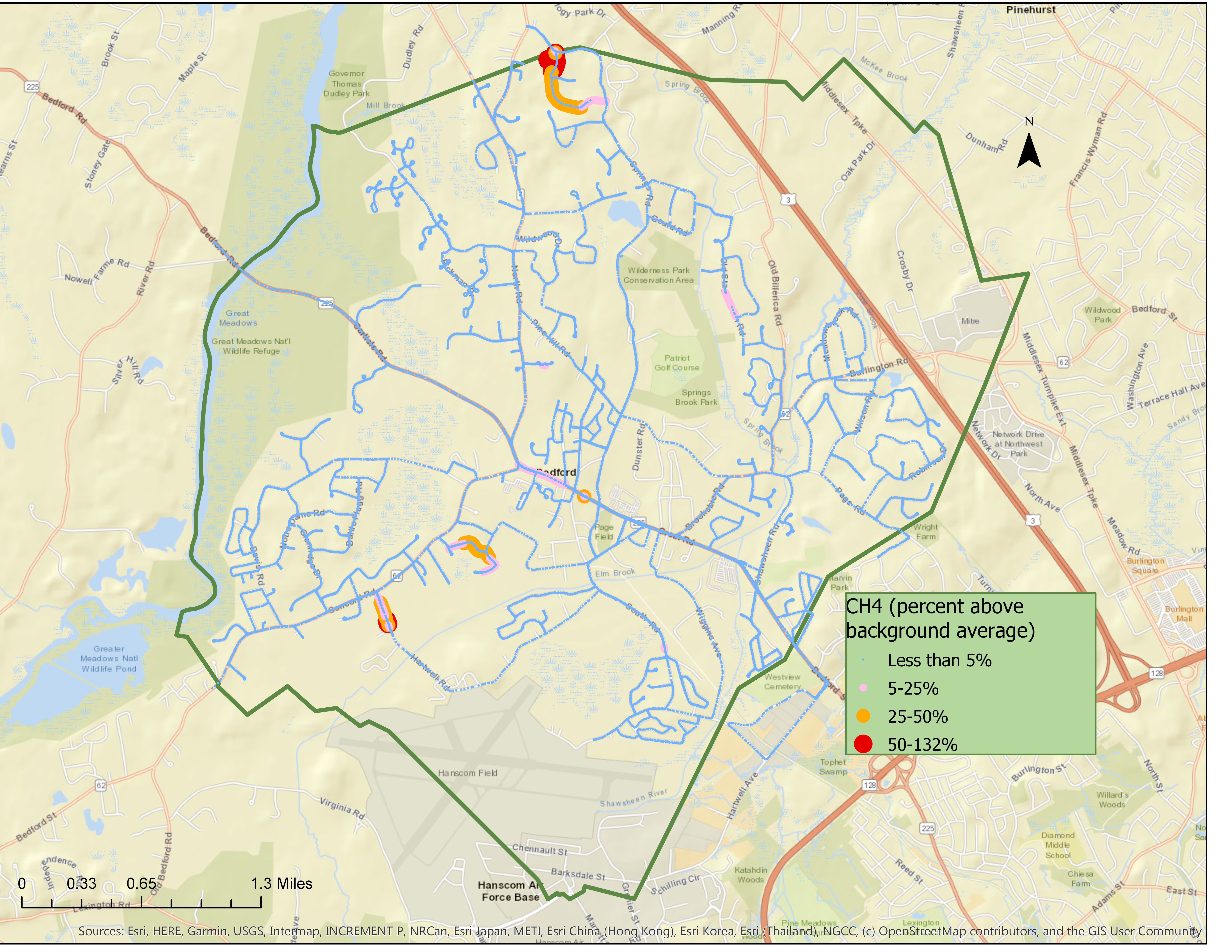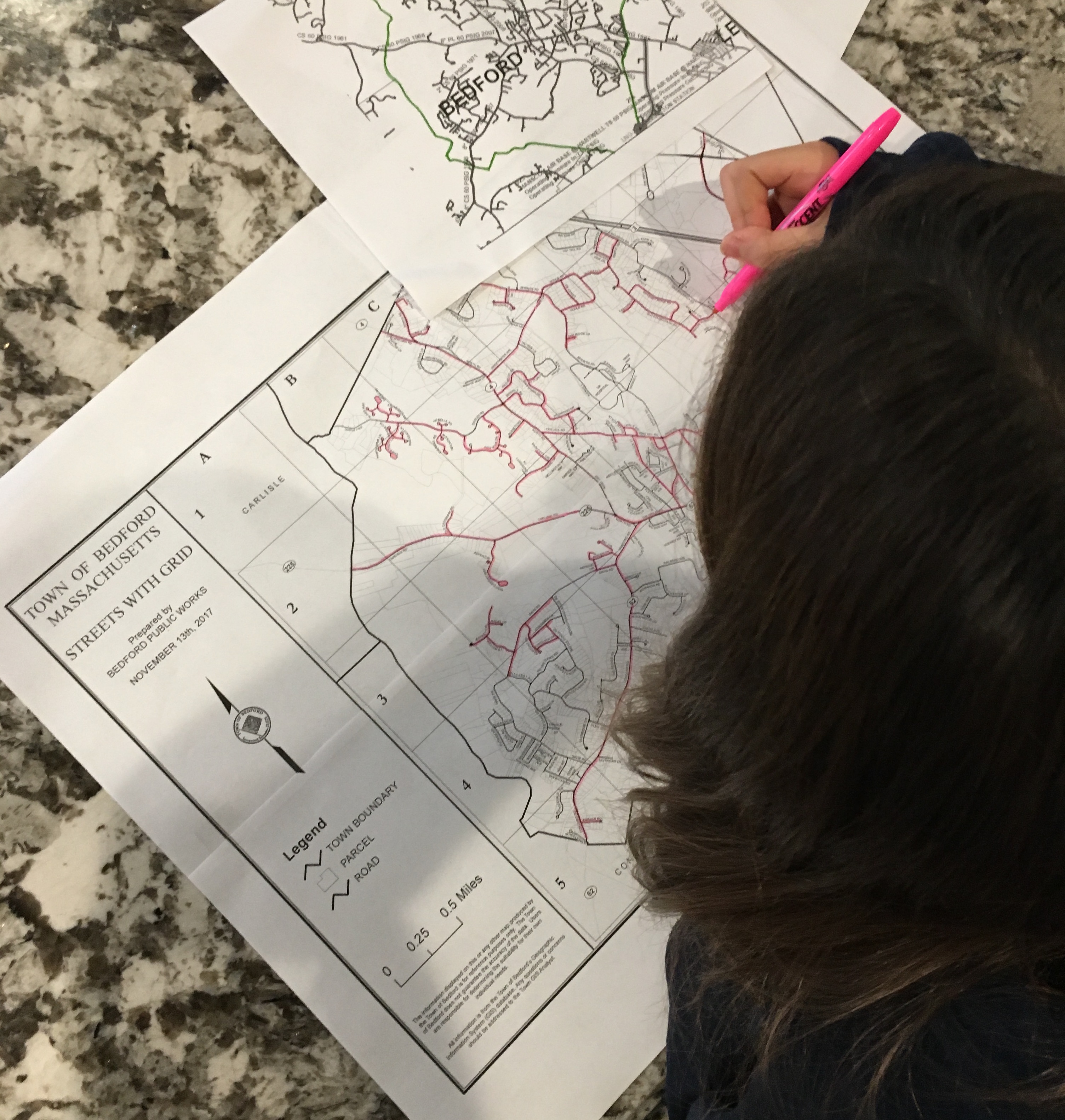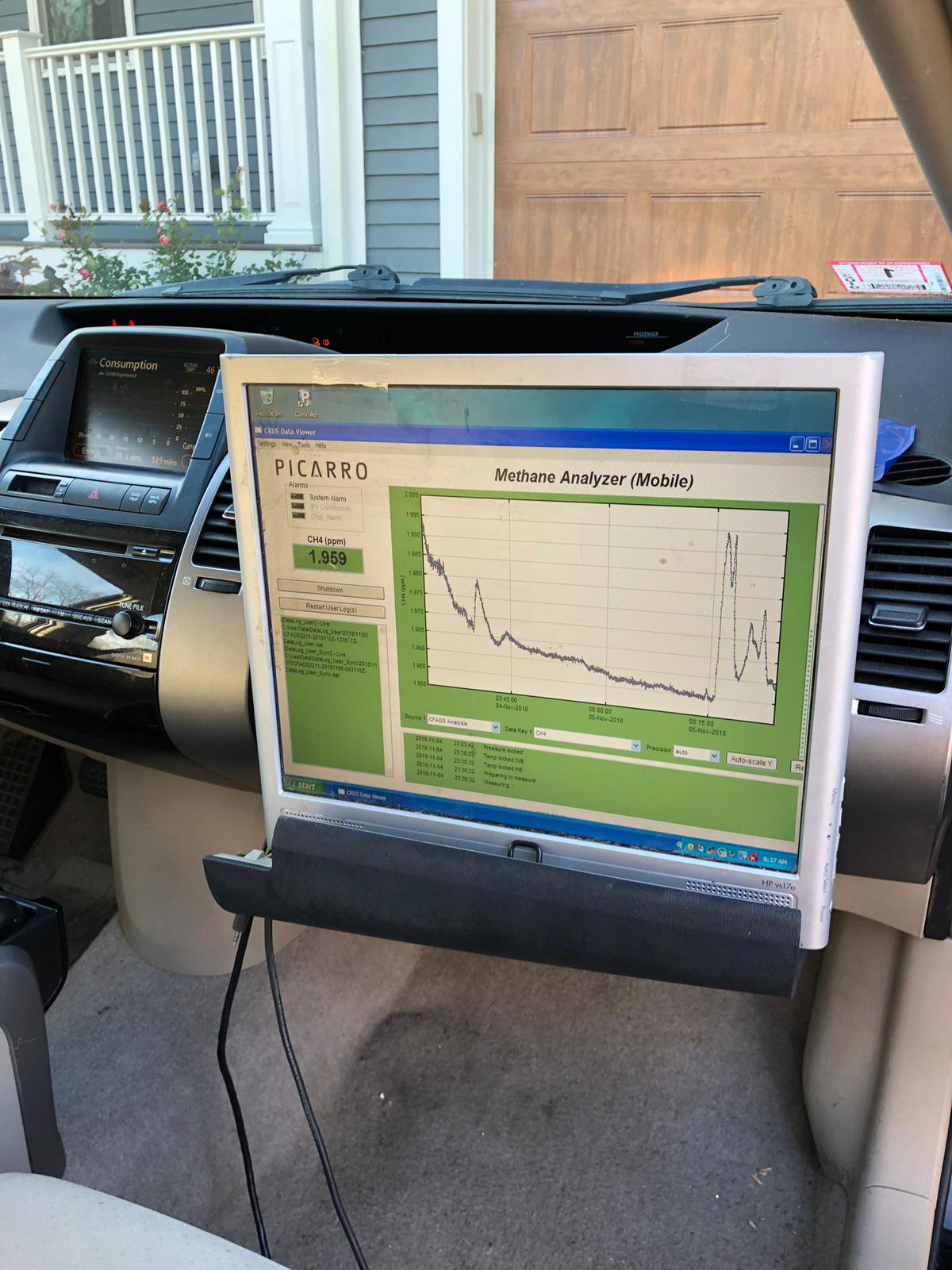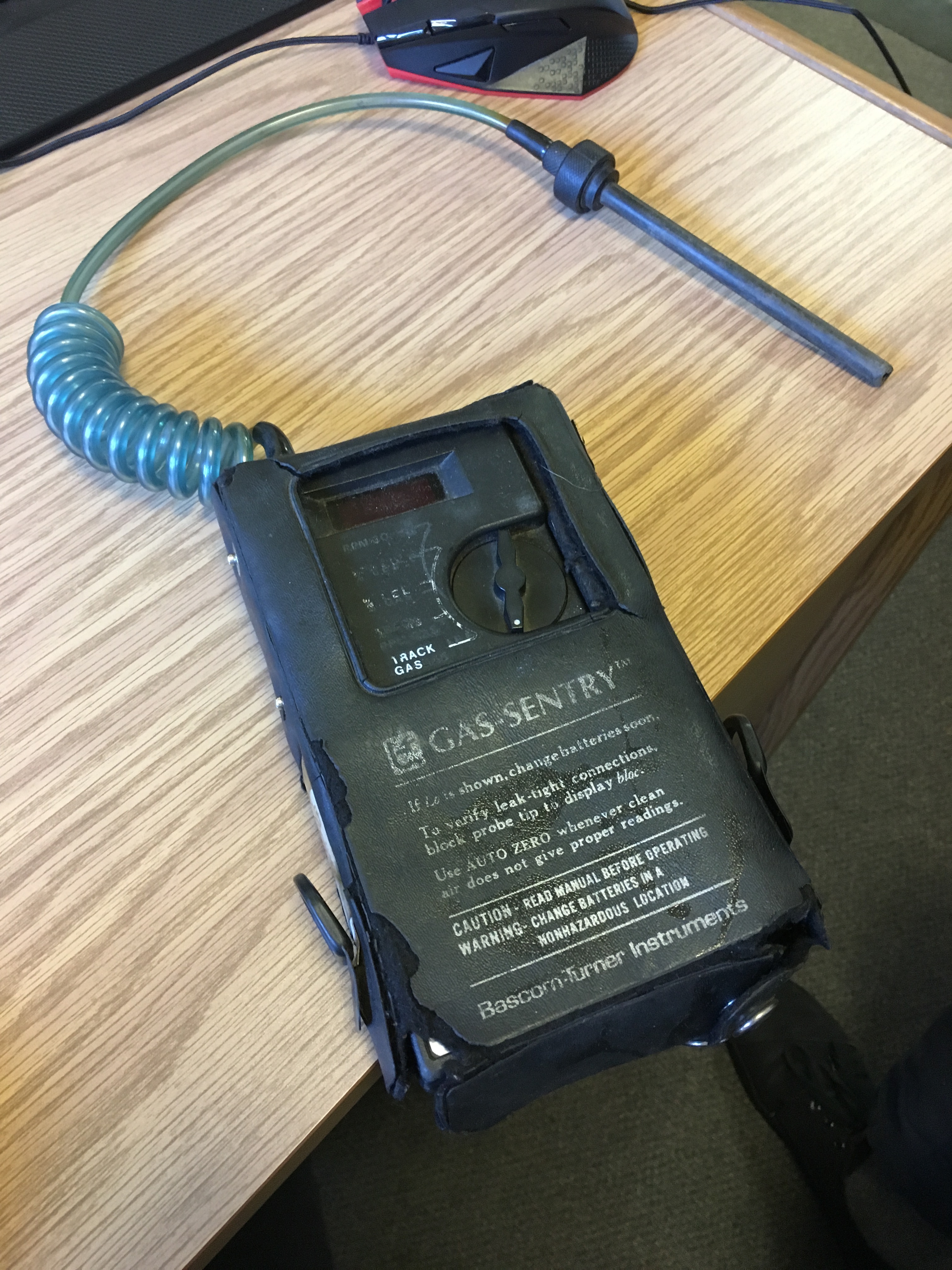


The Silver Award is the highest award a Cadette Girl Scout can earn. Higher awards challenge girls to take on big problems and create sustainable change locally. Cadettes are Girl Scouts in sixth to eighth grade. The big problem we wanted to focus on for our project is climate change. Specifically, the impact of excess methane in the atmosphere on climate change, the world around us, and Bedford in particular. The first step to solving a problem is community awareness of the problem, and all people should be aware of the dangers that methane can pose to themselves and their families.
Methane is a greenhouse gas that contributes to global climate change. Methane (CH4) is a natural gas that is 25 times more potent than carbon dioxide (CO2). Knowing about methane leaks in your area can prevent something going wrong in your neighborhood. It is helpful to understand that not all methane is dangerous. The average background level (natural amount) of methane is only two parts per million (0.0002%).
Methane is found naturally in the air in small quantities, however, in recent years the amount of methane has increased. The increase is caused by many different factors including burning fossil fuels, fracking for natural gas, livestock waste, fermenting rice fields, coal mining, and forest fires.
A source of excess methane in Bedford is through leaks in the natural gas pipes that distribute fuel to homes. Natural gas is delivered to many homes in Bedford through underground pipes and is used for cooking and heating homes. These leaks can cause the death of trees and shrubs, and create a risk of fire or explosion. Explosions can be caused by the pressure in the pipes increasing beyond what it is supposed to be and pushing gas into the house. In Bedford the pressure in the pipes is sixty pounds per square inch (psi). Many pipes in Bedford are over 50 years old which means they are prone to strains and cracking. Additionally, if streets have been recently paved, paving companies will sometimes cover the check valve (a device that controls the flow of gas that goes into the house). Without easy access to a check valve, when there is an accident it is almost impossible to stop the flow of natural gas into a house.
As part of our project we borrowed special monitoring equipment to map the presence of methane in the air in Bedford from two scientists: Professor Nathan Phillips from Boston University and Bob Ackley from Gas Safety USA. The device is called a mobile Picarro Cavity Ring-Down Spectrometer and it works by bouncing a laser off mirrors to measure methane concentrations every second. With the help of our parents as drivers, we covered over 90% of Bedford’s roads and the results can be seen at the Bedford Free Public Library in our display. We also went to several locations in town and used a soil methane monitor to detect methane in areas with gas leaks as reported by the gas company.
Our researched showed that some Bedford neighborhoods had methane leaks that increased methane concentrations up to 132% higher than background levels.


